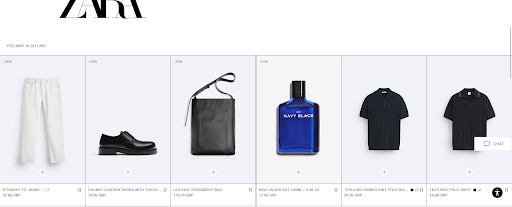In the advancing world of e-commerce, using generic marketing and cookie-cutter experiences just isn’t going to cut it any longer. The rise of big data over the past few years has meant that our online shopping experiences are increasingly tailored to our personal preferences and needs.
As an e-commerce seller, your customers will be expecting a similar level of personalization. Providing it is a key part of e-commerce success.
However, successfully making your customers’ shopping experiences personalized is easier said than done. If you get it wrong, you could be more likely to drive customers away than entice them into making a purchase. So, what are some of the biggest e-commerce personalization mistakes that sellers make? And how can you avoid them? Read on to find out.
What Is E-commerce Personalization and Why Is It So Important?
We all like to feel special. Whether it’s providing call center services operated by human agents or filling a brick-and-mortar store with smiling employees, businesses have long tried to make their customers feel valued and unique.
The rise of online shopping, however, seemed to buck that trend. With customers making purchases from behind the screen of a laptop, there appeared to be less scope for the sort of personal treatment that so often encourages customers to buy a product or service.
This has started to change in recent years. As e-commerce platforms have been able to collect more and more customer data, personalized shopping experiences online have become widespread.
You’ve probably started to notice this as a customer. Maybe you’ve noticed emails reminding you to purchase something that you added to your basket in the past, or messages from an e-commerce site that includes a recommended list of items that are tailored to your interests.

The reason why this has become such a widespread feature of online shopping is that it’s incredibly effective: 77% of customers say that they want even more personalization when they’re shopping online. Feeling like your needs are being met also builds a relationship with the company, growing brand loyalty.
Personalized online experiences have, therefore, become an expected feature of being online – whether it’s a personal feed on social media or a list of recommended news stories, we’ve come to expect personalization as a minimum. Your e-commerce company is no different.
If you want to give your customers the best possible user experience and improved customer service, it’s crucial that you start to implement personalization in your e-commerce site.
5 Common E-commerce Personalization Mistakes, and How to Avoid Them
Maybe you’ve started to personalize your e-commerce user experience or you’re just looking to get started – regardless of your company’s circumstances, it’s important that you know some of the biggest pitfalls that come with personalization. Without this, your personalization efforts risk being a failure. Here are five of the most common personalization mistakes:
1. Not Having Enough Customer Data…
Big data is the key to providing a personalized user experience. Without this crucial foundation, you won’t have enough information about your customers to create a tailored customer journey.
You’ll want to know who your customers are, and this includes understanding what they’re looking to buy, how much they’re prepared to spend with you, and what other goods or services they’re interested in.

This might seem like a daunting amount of information to find, especially when you consider that you’ll have to collect this information for potentially thousands of different customers. However, finding data such as past purchase information and demographic data will mean that you’ll soon have a good picture of who your customers are.
If you’re unsure about how to collect and manage this data, you’ll have to invest in a good data analytics system as well as a CRM program. These are sometimes integrated into mobile e-commerce software so check your existing services to see whether you can easily access customer data.
2. …or Using Outdated Information
Simply having a sufficient amount of customer data isn’t enough to create an effective personalized e-commerce experience. People change over time – imagine if someone tried to sell you clothes based on what you wore as a teenager!
This means that it’s imperative that you only use the most up-to-date customer data. Consider scheduling updates so that you regularly refresh your information.
In parallel, you’ll also want to make sure that your cloud storage is able to scale up as you collect more data to keep up to date (if you’re unsure about how to do this, you might want to ask an expert what is cloud PBX and explore these different cloud solutions).
Again, a good CRM program will automate much of this for you. This will mean that you don’t have to worry about accidentally relying on obsolete customer data.
3. Not Safeguarding Privacy
When it comes to handling your customers’ data, you’ve got to keep in mind that with great power comes great responsibility. While data is a key part of designing personalized user experiences, it’s also personal (and sometimes private) information about your valued customers.

Regulations like GDPR in the EU or CCPA in the US have meant that businesses have more legal obligations to protect customer privacy. Of course, personalization means that there’ll inevitably be some infringement on consumer privacy but you have to make sure that you find the right balance.
It’s important that you focus on consent-based data when you design the personalized aspects of your e-commerce site. This can include only using data from that immediate session when offering recommendations to customers.
Lastly, you should also make sure that your data storage is secure: if you want to be confident that you’ll avoid any failures in privacy, you should store customer data on a protected cloud platform and ensure that it’s encrypted well.
4. Offering Simplistic Personalization
If you’re going to spend time personalizing your customer’s e-commerce journeys, there’s no point in just keeping it as broad as possible. Your customers want any personalization efforts to actually feel authentic and meaningful, as well as immediately valuable and responsive to their needs.
This means that it’s not enough to simply use different OnlyDomains names and link a customer to their country’s domain according to their location data, nor should you stop at creating one-dimensional profiles for your customers.
For example, using data to know that a customer is a man from New York won’t help you to tailor product recommendations for them.
However, for example, if you can create a customer profile that includes the fact that they’re shopping for a small business and have recently searched for Vonage VoIP telephone service, you’ll be able to recommend similar products or other services that would interest professionals or businessmen.

Avoiding simplistic personalization is not just about the information that you have on your customers, however. You’ll also want to make sure that your promotional content is intelligent.
This will mean that you should keep mixing up your targeted emails and try to design bespoke marketing content that both suits your company’s niche and makes the most of your customer data.
A lot of e-commerce companies make the mistake of thinking that personalization is enough to make their marketing stand out – keep innovating and steer clear of simplistic personalization to avoid making this error in the future.
5. Getting Too Personal
If you want your customers to part ways with their money, you’ll have to make sure that they feel like they can trust your company. While personalization is a great way to create a connection with your customers, it can be easy to put customers off by getting too personal.
There are a couple of things to keep in mind to avoid this. You shouldn’t keep sending repetitive personalized emails, especially if you’re not getting any success from them. Even if you use a good email lookup service, this can result in your emails getting stuck in the spam folder.
You should also limit the amount of marketing materials that use externally sourced data. If it becomes clear to a customer that you’ve been tracking their activity across multiple websites, they can feel like they’re being stalked – an unsettling feeling that obviously will reduce the chances of them making a purchase with you.
If you’re compliant with privacy regulations, you should automatically avoid getting too personal with your customers. However, when you’re designing personalized marketing and retargeting tactics, it’s important that you remember that more personalization is not necessarily better personalization.
Avoid Mistakes and Make E-commerce Personalization Work for You

Increasing personalization is one of the fastest-growing e-commerce trends at the moment. When it’s done right, personalized e-commerce can be the online equivalent of a friendly face behind the counter at a brick-and-mortar store. Customers will be more likely to spend and will see your brand as something more than just another e-commerce business.
However, if you want your personalization to work it’s crucial that you avoid some common mistakes. Make sure that you follow all privacy regulations, use the right amount of up-to-date customer data, and find the right balance in your personalized offerings.
If you stop making these common e-commerce personalization mistakes, you can ensure that your customers have a great user experience every time they shop with you.
Interesting Related Article: “How To Build a Secure Ecommerce Store That Customers Can Trust“









